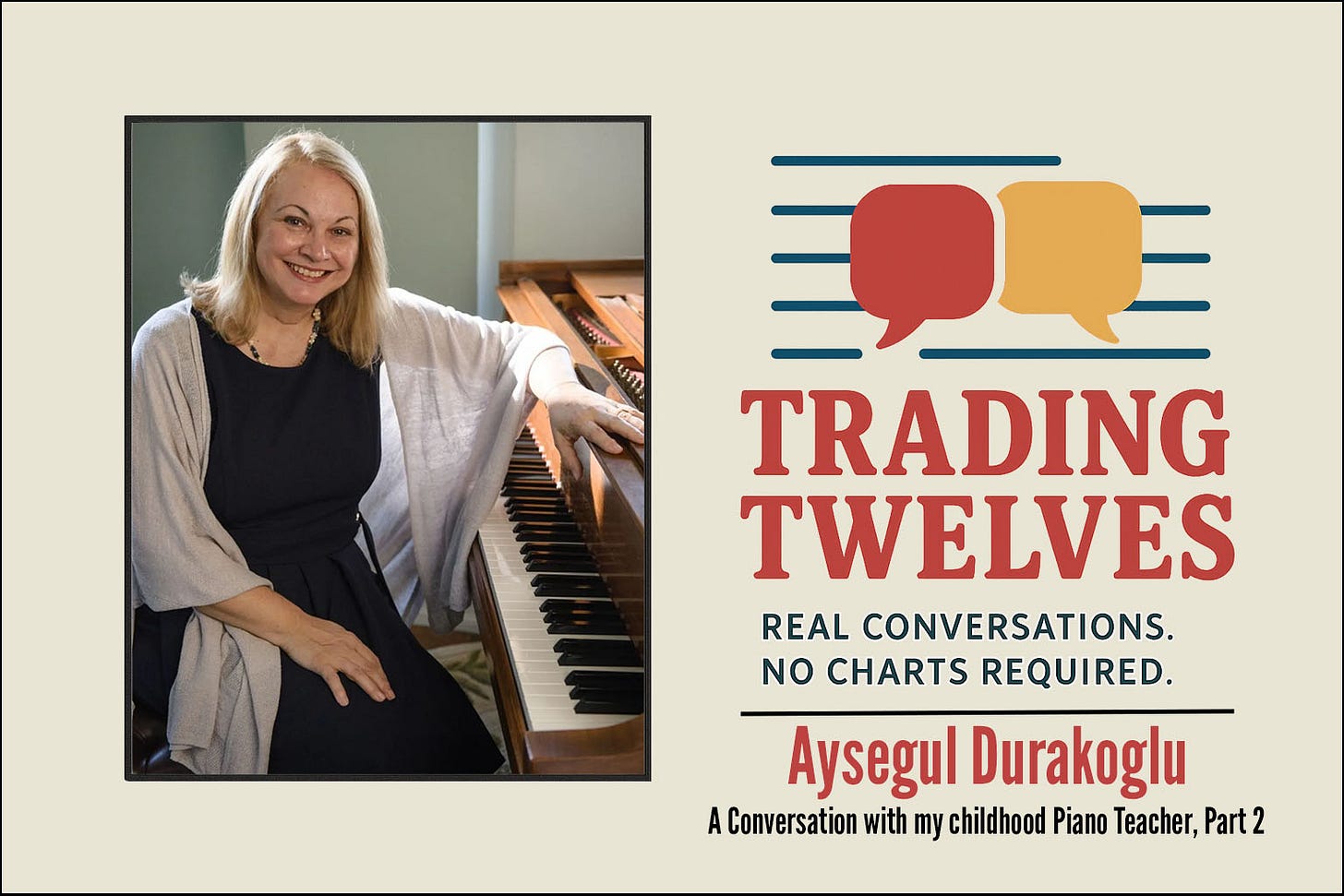A Conversation with Aysegul Durakoglu Part 2
My childhood piano teacher and mentor Aysegul Durakoglu speaks on her influences, the music of Debussy, and her evolving relationship with Turkish music.
A Conversation with Ayesgul Durakoglu (Part 2)
In Part 2, Ms. Emine opens up about the pianists who shaped her artistry, her deep connection to Debussy, the rediscovery of her Turkish musical roots, and why pursuing music today still begins with passion.
Click here to read Part 1:
Keep reading with a 7-day free trial
Subscribe to Wynton Kelly's Liner Notes to keep reading this post and get 7 days of free access to the full post archives.


